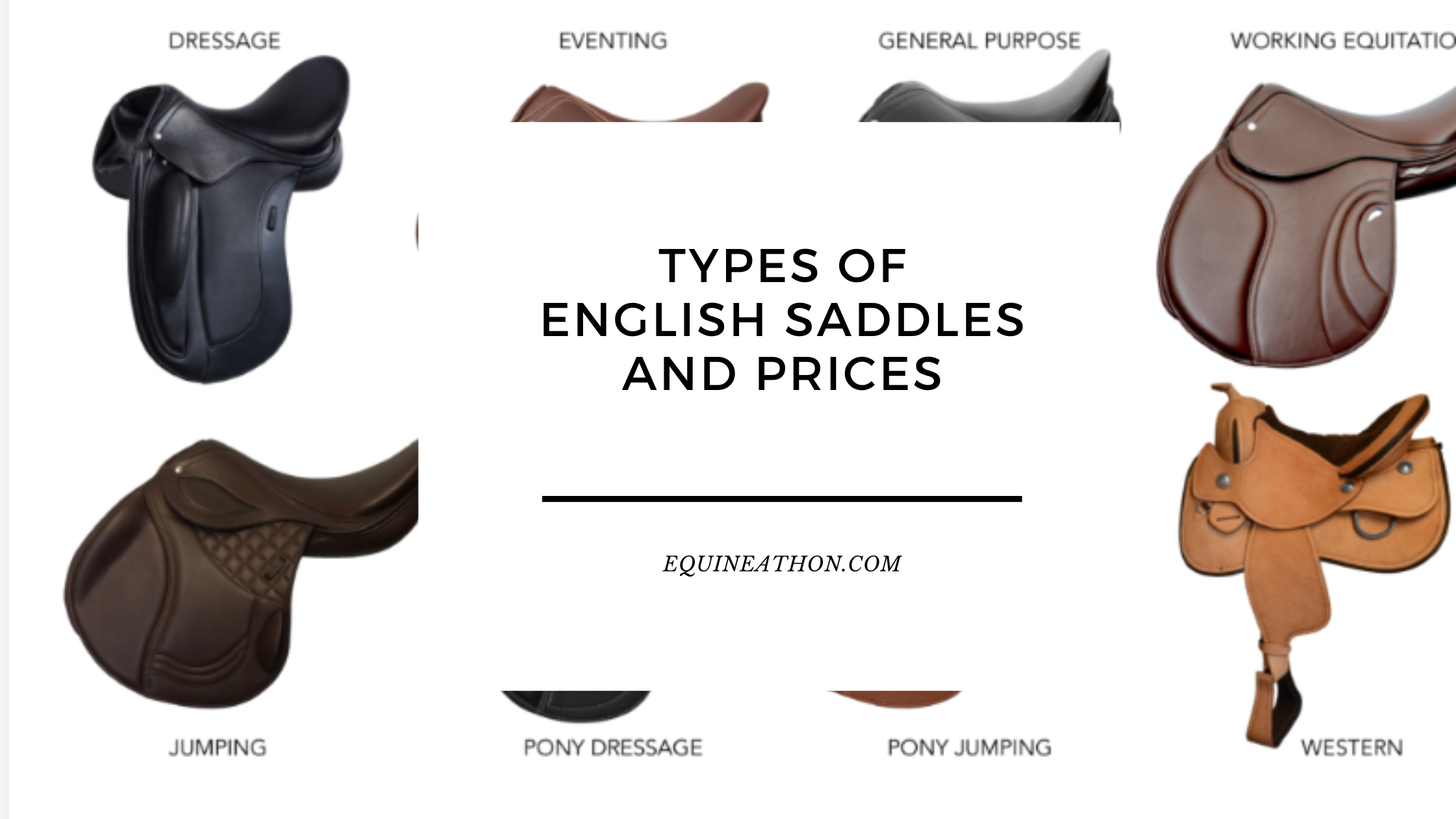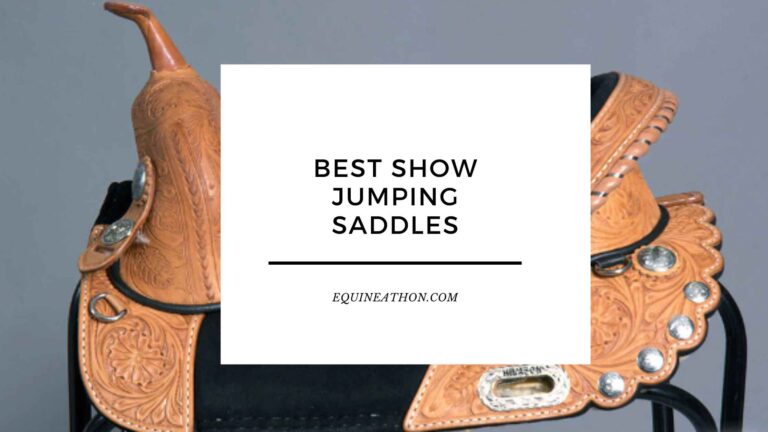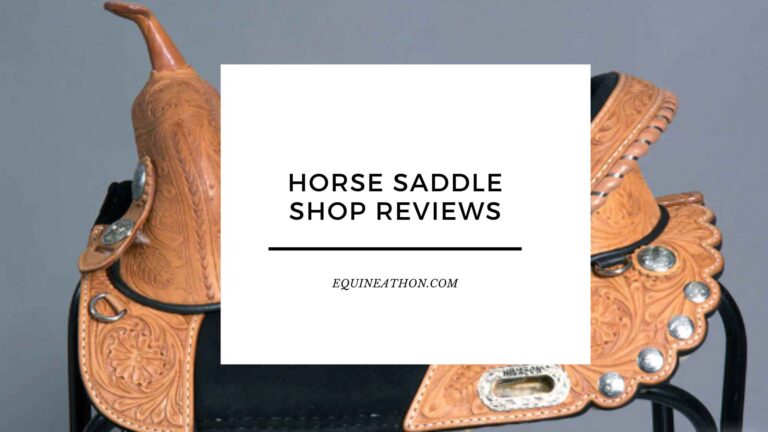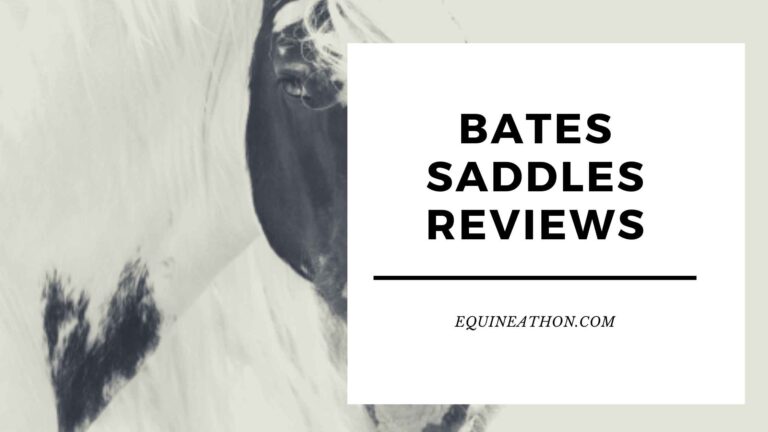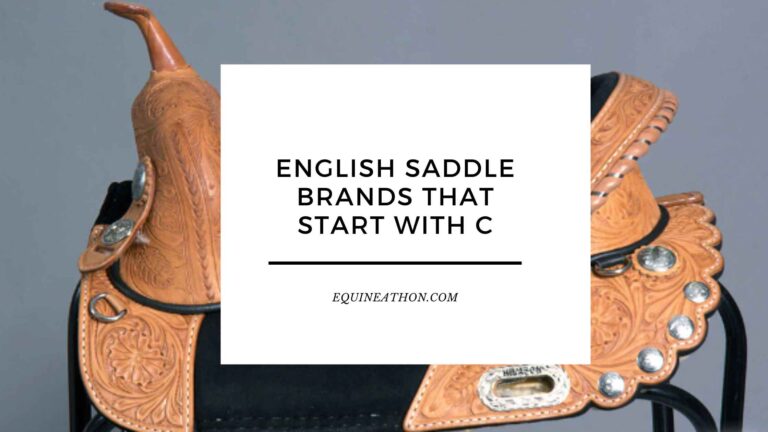Types of English Saddles and Prices [with PICTURES]
As an equestrian enthusiast, the type of saddle I use significantly influences my riding experience. With numerous variations, especially in the realm of English saddles, it’s crucial to understand the nuances of each type. So, if you’re wondering about the various kinds of English saddles and their prices, you’ve come to the right place.
Direct Answer: English saddles primarily encompass Dressage, Jumping (Close Contact & All-Purpose), and Specialty saddles. Prices vary widely based on the saddle type, brand, material, craftsmanship, and additional features, ranging from $200 to $5000 and more.
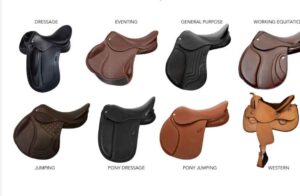
1. Dressage Saddles:
These saddles have a straight-cut flap and deep seat to allow riders a close leg contact, assisting in precise movements and commands. They’re perfect for the classical dressage discipline.
- Average Price: $500 – $3,500User Review:
⭐⭐⭐⭐⭐
“As someone who’s passionate about dressage, investing in a high-quality dressage saddle transformed my riding technique. The deep seat offered unparalleled comfort.” – Alexandra P.
2. Jumping Saddles:
These come in two main types:
- Close Contact Saddles: Designed for show jumping and cross-country, they have a flatter seat and forward-cut flaps.
- All-Purpose Saddles: A versatile option, with a slightly deeper seat and moderate flap angle, suitable for both jumping and flatwork.
- Average Price: $400 – $4,000User Review:
⭐⭐⭐⭐☆
“My close contact saddle provides the flexibility I need for jumps while ensuring a snug fit. While it took some time to break in, it’s now an essential part of my gear.” – Jordan M.
3. Specialty Saddles:
This category encompasses various niche designs, including:
- Eventing Saddles: Ideal for event riders, offering support for both jumping and dressage phases.
- Endurance Saddles: Designed for long rides, focusing on rider and horse comfort.
- Average Price: $700 – $5,000+User Review:
⭐⭐⭐⭐⭐
“Opting for an endurance saddle was the best decision for my long trail rides. The weight distribution and comfort are unmatched!” – Liam R.
Tips for Choosing the Right Saddle:
- Fit First: Ensure the saddle fits both rider and horse. A misfit can lead to discomfort or injury.
- Material Matters: Leather saddles, while pricier, tend to be more durable and comfortable. Synthetic options are lighter and easier to maintain.
- Trial Run: If possible, test the saddle before purchasing. Many stores offer trial periods.
User Review:
⭐⭐⭐⭐☆
“I never realized how much saddle type could influence my ride. After switching to a dressage saddle, my performance and comfort improved tremendously!” – Isabella K.
User Review:
⭐⭐⭐⭐⭐
“I always recommend trying a saddle before buying. It’s like shoes; you wouldn’t buy without trying them on first. My all-purpose saddle fits like a dream after testing a few!” – Ethan S.
Conclusion:
English saddles, with their rich variety, cater to the diverse needs of riders. Whether you’re gracefully dancing in dressage or jumping hurdles, there’s a saddle tailored just for you. Remember, it’s an investment in both your and your horse’s comfort and performance, so choose wisely!
ALSO SEE: Volunteer with Horses San DIego

40 FAQs Based on the “Types of English Saddles and Their Prices” Article
- What are the main types of English saddles?
The primary types of English saddles are Dressage, Jumping (Close Contact & All-Purpose), and Specialty saddles. - How much does a typical Dressage saddle cost?
Dressage saddles generally range from $500 to $3,500. - What design aspects are specific to Dressage saddles?
Dressage saddles have a straight-cut flap and deep seat to ensure close leg contact. - What are Jumping saddles primarily designed for?
Jumping saddles, including Close Contact and All-Purpose, are tailored for show jumping, cross-country, and flatwork. - Between Close Contact and All-Purpose saddles, which is more versatile?
The All-Purpose saddle is more versatile, suitable for both jumping and flatwork. - What’s the average price range for Jumping saddles?
Jumping saddles typically range from $400 to $4,000. - What are Specialty saddles?
Specialty saddles cater to niche riding needs, including Eventing and Endurance riding. - How much do Specialty saddles usually cost?
Specialty saddles can range from $700 to $5,000 or more. - What’s an Eventing saddle?
An Eventing saddle is designed for event riders, providing support for both jumping and dressage phases. - Why are Endurance saddles special?
Endurance saddles are crafted for long rides, prioritizing both rider and horse comfort. - Is leather a recommended material for saddles?
Yes, while leather saddles are often pricier, they are usually more durable and comfortable. - Are there advantages to synthetic saddles?
Synthetic saddles are generally lighter, easier to maintain, and can be more affordable. - Why is the fit of the saddle important?
A proper saddle fit ensures comfort and prevents potential discomfort or injury to both rider and horse. - Should I try a saddle before purchasing?
Yes, it’s advisable to test a saddle before buying, much like trying on shoes. - What’s the primary focus of Dressage riding?
Dressage emphasizes precise movements and commands. - Do all stores offer trial periods for saddles?
Not all, but many stores do offer trial periods for customers to test saddles. - What does the flap design in a Dressage saddle help with?
The straight-cut flap design in Dressage saddles aids in ensuring close leg contact with the horse. - Which saddle is recommended for someone who enjoys both jumping and flatwork?
An All-Purpose saddle would be ideal as it’s versatile for both activities. - Are English saddles suitable for long trail rides?
For long trail rides, an Endurance saddle, a type of Specialty saddle, would be the most suitable. - Can a Dressage saddle be used for jumping?
While it’s possible, Dressage saddles are primarily designed for dressage. Jumping saddles are more appropriate for jumping activities. - Is the price of a saddle always indicative of its quality?
Not always. While price can be an indicator, other factors like brand reputation, user reviews, and materials also play a role. - What should I consider when budgeting for a saddle?
Consider factors like saddle type, material, brand, craftsmanship, and any additional features. - Can a single saddle be suitable for multiple equestrian disciplines?
Specialty saddles like the All-Purpose and Eventing saddles are versatile and can cater to multiple disciplines. - How do I maintain a leather saddle?
Regular cleaning with saddle soap and occasional conditioning will keep a leather saddle in top shape. - Are there any weight restrictions for English saddles?
While specific weight restrictions might vary, ensuring a good fit for both rider and horse is crucial. - How do I know if a saddle fits my horse well?
Look for even weight distribution, no pinching or tight spots, and ensure your horse moves comfortably. - Why are there such significant price variations between saddles?
Price variations arise due to differences in brand, material, craftsmanship, design, and additional features. - How long does a well-maintained leather saddle last?
With proper care, a quality leather saddle can last several decades. - Is it necessary to have different saddles for different equestrian activities?
While some saddles are versatile, having activity-specific saddles can enhance the riding experience. - What should I look for in user reviews when choosing a saddle?
Focus on comfort, fit, durability, and overall user satisfaction. - Are synthetic saddles as durable as leather ones?
While synthetic saddles are durable, genuine leather saddles often boast longer lifespans with proper care. - Do English saddles come with a warranty?
Many reputable brands offer warranties, but terms vary. Always check with the seller. - Are there English saddles specifically for children?
Yes, there are youth or pony saddles designed for younger riders and smaller horses. - Can I customize an English saddle?
Many brands offer customization options, especially for high-end models. - How often should I replace my saddle?
With proper maintenance, saddles don’t need frequent replacement. However, fit and comfort should be regularly assessed. - Are there saddles designed for heavier riders?
Yes, some brands offer designs with broader weight distribution for heavier riders. - Can I use my jumping saddle for dressage training?
While it’s possible, a dressage saddle is more suited for dressage-specific training. - How do I clean a synthetic saddle?
Synthetic saddles can often be wiped down with a damp cloth and mild detergent. - Why do some saddles have deeper seats?
Deeper seats, like those in Dressage saddles, provide added security and alignment for the rider. - Are English saddles suitable for casual riding?
Absolutely! Choose a saddle like the All-Purpose for versatility in both casual and more structured riding.

